May 3 | Household Tips, Frugal Living, Gardening, Income earning ideas, Money Saving Tips
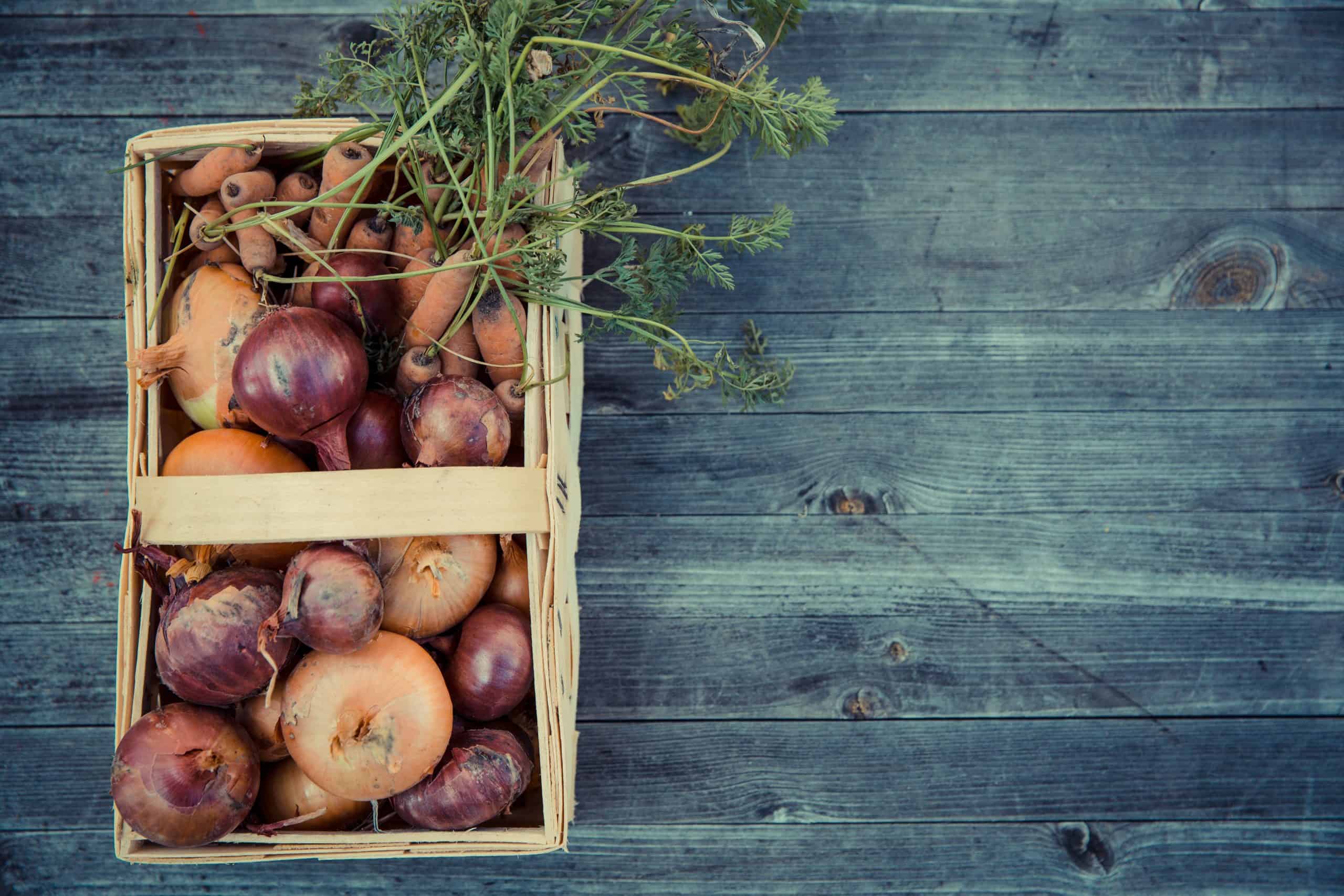
How to Earn Money from your Garden
Odds are, when you started your garden you were not thinking about how you could earn money from it. Over time you may have seen a bit of potential and started to think about how you could make money from your garden. Even a small thriving garden can earn a bit of extra money. If you are skilled or have plenty of space you can earn even more.
Today, I’d love to outline some ways that you can Earn Money from your Garden.
Sell extra produce
Often, the first issue that makes you think about how you could earn money from your garden is an overabundance of produce. You may be wondering just how you could ever use up that many tomatoes. Selling that extra produce is a great way to earn some cash and help save someone else some money. First, offering the produce for sale to friends and family will definitely help you reduce your overabundance. If you still have produce leftover, post a sign in front of your yard advertising produce for sale. You may have many neighbors stopping by!
Selling canned goods
Check your Province or city’s food laws to see if you can earn money from your garden by canning extra produce and selling the jars. Selling homemade jams, jellies, and other canned goods just might be the answer for you. Due to law, your sales are often limited to a few thousand a year, but that’s perfect for using up the extra food from your garden. Homemade canned jams and jellies make great gifts around the holidays and can end up selling very well.
Sell plants
Are you a whiz at getting seeds to sprout into strong thriving seedlings? Do you have plants in your garden or pots that need to be thinned out? Selling plants to other gardeners in your neighborhood is a great way to earn extra money from your garden. If you do not have plants to sell how about seeds? Cuttings from that prize plant your neighbors all love?
Teaching others gardening skills
Have you been gardening for years and have a beautiful thriving garden that neighbors admire? Why not offer to teach gardening classes in your home garden or even at the local library for a small fee? Depending on local interest, you can earn a good bit of money running classes on the topics of caring for plants, propagating cuttings, and keeping plants alive for the not so green thumbs. Often a bit of education is all that stands in the way of a thriving garden. Many parents are looking for summer activities for their children and learning to garden could be a great use of time and energy.
The important part of making money with your garden is to not allow the focus on earning to take the joy out of your garden. If you lose the joy that made your garden thrive in the first place, your garden will suffer. So start out small, have fun, and make the most of the opportunities that come your way.
Have you tried making some extra money from your garden? How did you do it?
Apr 27 | Household Tips, Gardening
As spring rolls in, the garden can go in with it! This year, start your garden off right by planning for success. Some plants are a must for a productive garden that you will love as you feed your family from your own hard work.
Here are 10 things you should grow in your garden this year:
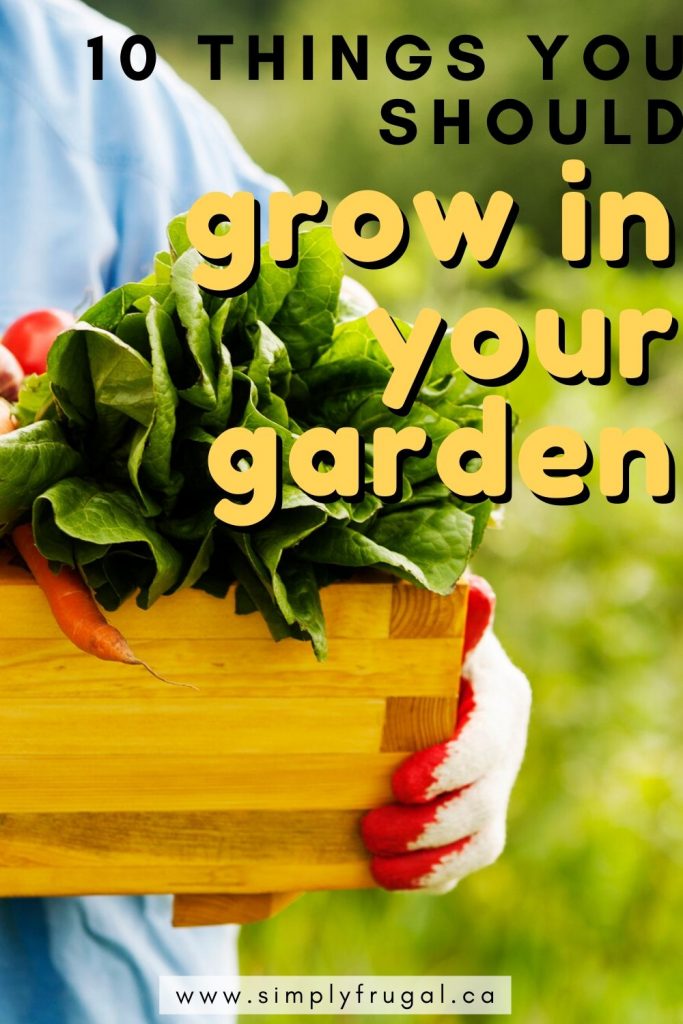
Lemon Grass.
Lemon Grass should be at the top of your list for your garden this year. This ornamental plant can be grown nearly anywhere in a pot. It keeps bugs away, bringing you peace from those pesky things. It can also be used to season and add flavor to foods. This Fresh Lemongrass Tea looks so refreshing!
Tomatoes.
This versatile plant can be used for so many dishes and even as a snack. (Sprinkled with salt and pepper…yum!) Tomatoes are packed with vitamins and are easy to grow. I especially like growing cherry tomatoes in containers.
Bell peppers.
With more vitamin C than an orange and plenty of flavor, bell peppers are a great addition to your garden and freeze well for later.
Bush beans.
Bush beans can be grown under plants that grow tall. Beans put nitrogen into the soil making them perfect companion plants to Carrots, Beets, Broccoli, Brussel sprouts, Cauliflower, Celery, Corn, Cucumbers, Eggplant, Kale, Peas, Potatoes, Radishes, Strawberries and Swiss Chard.
Pumpkin.
Pumpkins make a great ground covering plant that can shade the roots and stems or taller plants helping them thrive in the summer heat while providing you with great food in the fall harvest.
Basil.
This herb repels bugs and other pests helping to protect your garden while providing you with a tasty food for your table. Basil also makes a great edible edging plant for flower beds, helping maximize space. This Cold Pesto Pasta Salad is a great way to put basil to use.
Strawberries.
You will find in most areas the selection of fruit you can grow is limited. Strawberries are a great fruit that will grow nearly anywhere making it the perfect addition to your garden. They keep coming back better year after year and make a great potted plant.
Spinach.
If you’re looking for a green filler plant for your garden, spinach is just the plant for you. Spinach is high in vitamins and minerals, grows well in shaded areas with just a few hours of sun per day, and has nearly limitless ways to use in the kitchen.
Oregano.
Oregano is a classically Italian herb packed with medicinal qualities as well as a potent flavoring for your favorite dishes from pasta to pizza. This plant also makes a good filler plant that provides great food for your family.
Radishes.
When it comes to quick growing veggies that can help feed your family in less time, radishes are a great way to go.
I’d love to know what you like to grow in your vegetable garden every year. Let me know in the comments below!
Jun 6 | Household Tips, Gardening

Creative Uses for Chocolate Mint
Chocolate mint is an easy to grow perennial that once you plant it, you will find yourself with an abundance of it. It smells just like the name suggests, like minty chocolate, and smells good enough to eat! If you grow chocolate mint or are considering it, take a look at these 7 creative uses for chocolate mint that you must try! You will find that it’s a really practical and delicious herb to grow. Here is what you need to know:
1. Use it as a dessert garnish.
You can use it to top your cakes, cookies, and cupcakes as it offers some nice color and even adds to the aroma of the dessert.
2. Add it to shakes and ice cream.
Chocolate mint is a wonderful addition to your homemade shakes and ice cream. The oils in the plant can add a minty flavor and chocolate aroma that is heavenly. Be sure you only use mint that has been grown without chemicals and is rinsed well.
3. Freeze it in ice cubes.
Fancy up your beverages and add flavor at the same time when you freeze chocolate mint leaves in ice cubes. They will give the cubes some color and add flavor as they melt. This is an excellent idea to try when you’re throwing a garden party or shower. You can also add it to homemade popsicles as well.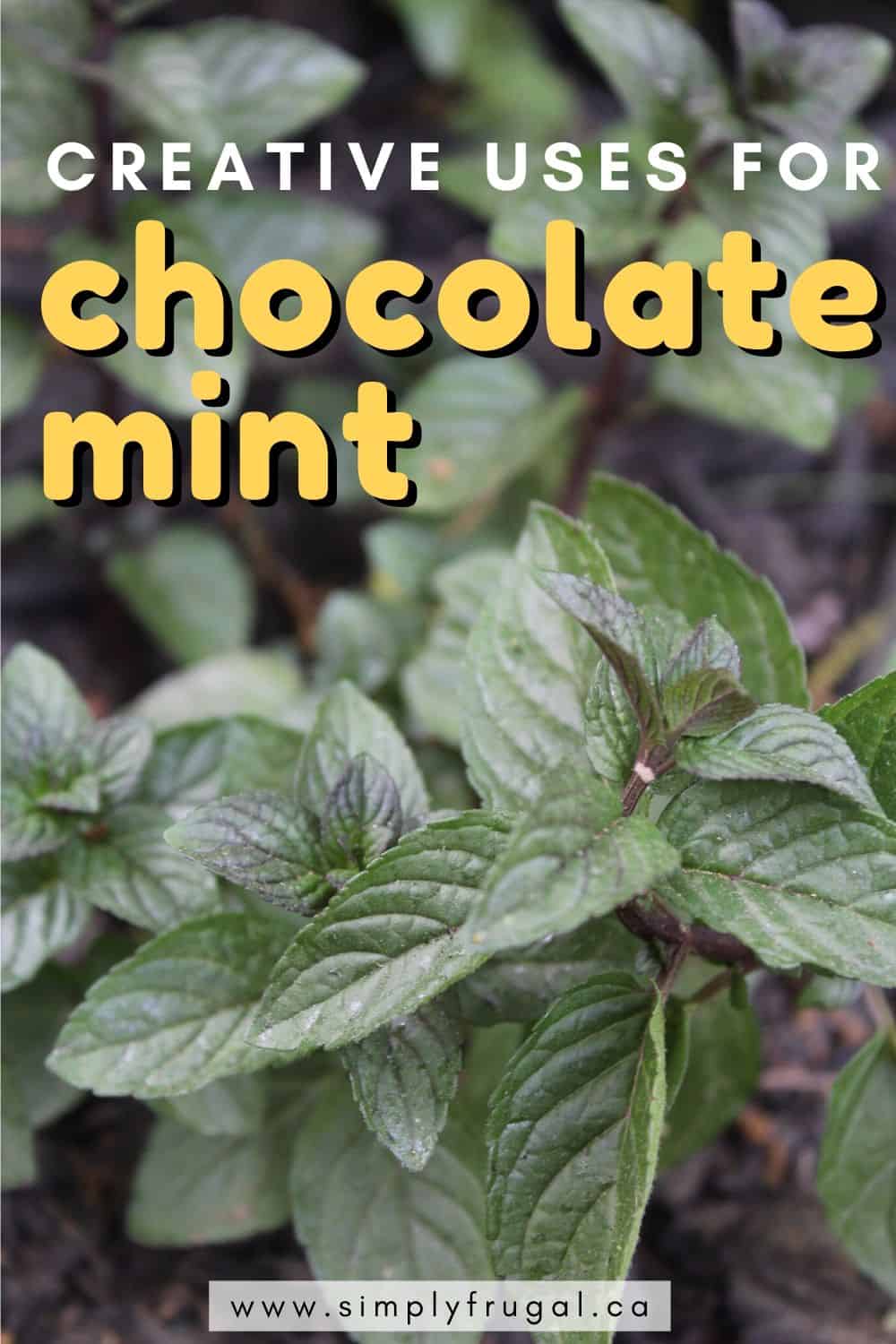
4. Add it to your cocktails.
Chocolate mint is perfect for adding to your cocktails that require muddled mint. Mojitos taste even better when you add some fresh mint, and chocolate mint will get the job done and add a unique twist to the drink as well. Also, you can garnish any drink with a fresh chocolate mint sprig!
5. Make mint infused oil.
You can let chocolate mint leaves and stems soak in a bottle of almond or coconut oil to make your own mint infused oil. You can then use it as a massage oil (mint will cause slight tingles and warmness, be advised) or even add it to dessert recipes or a type of fruit salad.
6. Mix it in with your homemade bath products.
You can add chocolate mint to any of your homemade body scrubs, body butters, or other homemade bath products. Just muddle the mint or dry it and add it. You will not only get the benefits of mint but it will leave a wonderful scent too.
7. Dry it for crafting.
You can use dried mint leaves in your crafting as well. Try adding it to homemade candles, lotions, potpourri and more. It will add a lovely fragrance and some fresh color as well. To dry your mint just tie it into a bundle and hang it in a cool dark place until it’s dry.
So, what do you think of these creative uses for chocolate mint? Are you ready to put all your chocolate mint to work for you?
Ideas for other Herbs:
Aug 12 | Household Tips, Easy DIY, Gardening

Canning for Beginners: How to Get Started with Canning
Home canning is a fun and healthy way to preserve the summer harvest. Although canning was first discovered in the 1700’s, it wasn’t made popular until the late 1850’s when John Mason invented a jar with a screw top lid. Interest steadily grew until the 1950’s, when supermarkets became widespread.
In recent years, canning has started making a comeback. Gardening is fast becoming a popular hobby, and farmer’s markets are plentiful. Families are more mindful about the chemicals in food and preservation, and home canning makes it simple to know exactly what your family is eating.
Home canning can seem overwhelming to a beginner, but there are recipes and techniques for all skill levels. You won’t need many supplies and they can be inexpensive. Here are the answers to frequently asked questions that will make canning for beginners less intimidating. What canning supplies you need, where to find recipes and how to get started with canning!
Canning Supplies
Canning Methods
Water bath canning, sometimes called boiling water canning, is the easiest and least time consuming method. This method applies to high acid foods, such as fruit, tomato based, and pickled recipes.
A pressure canner is used to can low acid foods, such as corn, green beans, and soups. It maintains a higher internal temperature which is required to destroy the bacteria that more acidic fruits and vegetables destroy on their own.
Selecting a Recipe for Canning
Before beginning, you should select a recipe from a trusted canning source, such as the Ball Canning Book or Bernardin Complete Book of Home Preserving. These recipes are subject to strict safety testing.
When making your selection, consider skill level, seasonal produce and additional ingredients. Although jams and jellies are relatively easy to make, they can be expensive and delicate. So when it comes to canning for beginners, tomatoes, pickles and fruit like peaches or cherries are typically the best.
Preparing your Supplies for Canning
Once you’ve selected a recipe, you will need to prepare your supplies. A water bath canner should be inspected thoroughly for corrosion, dents, and pinholes. Any of these can affect the distribution of heat, resulting in an unsafe can.
Wash the rings and lids with warm soapy water. Allow the rings to dry thoroughly and place the lids in a pot of simmering water. They must maintain a temperature of 180°F. Although you can reuse rings until they begin to rust, you should never reuse the lid. The food safe compound seal is only good for one use.
Inspect your jars thoroughly for any cracks, chips, or scrapes. Wash with warm soapy water and rinse. If there is a film or residue on the jars, soak them in a mixture of 1 part vinegar to 10 parts water. Wash with a soft cloth and rinse.
Place jars in a pot of simmering water for no less than 10 minutes. Jars must be hot when filled.
Alternatively, you can skip the handwashing and boiling the jars by running them through the dishwasher. As soon as it’s finished, you can begin removing the jars one by one to fill. Make sure to keep the dishwasher closed between fillings to keep the jars warm.
Keeping Canning Safe
If possible, always use a funnel to fill your jars. You can pick up a canning funnel for less than $2 in stores and it will help prevent burns and messes. This also keeps food from the rims of the jars, which will result in a bad seal. If you spill food on the edge, wipe the edges with a warm, damp towel.
You may be lucky enough to have had a pressure canner gifted to you or handed down from a family member or friend. Before using, take the canner to a hardware store and have it tested. The seals can deteriorate over time and the pressure gauge can malfunction, so annual testing is recommended.
Canning for beginners should never be feared. If you follow the proper techniques and keep your supplies clean, you will provide your family with healthy, delicious produce for years to come.
Related Canning Articles:
Jun 9 | Gardening
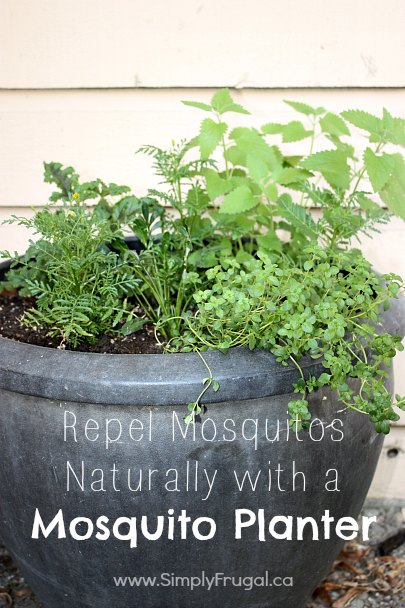
I mentioned in my first container garden update that I would do a separate post detailing the plants I have in the pot I deemed my ‘Mosquito Planter’. While we don’t get a ton of mosquitoes, we do live by a creek (damp) so we do see them around and they are not my favourite bug to live with. In one of my Pinterest escapades, I discovered that I could create a container full of plants that mosquitoes don’t like. Namely plants of the citrus scented variety.
Not only does the scent of the plants keep mosquitoes at bay, I can even tear off a leaf and rub it on my skin if I’m finding they’re getting too close. I may even bring a leaf or two along on any hikes we might be doing!
Here’s what I put in the pot:
- Citronella Geranium (I would use these leaves on my skin)
- Marigold ‘Lemon Gem’
- Catnip
- Lemon Thyme (can be used in cooking too!)
- Gazanias (only because I had extra from another flower pot)
I was looking for lemon grass but I couldn’t find any before I got tired of diving to all our local nurseries.
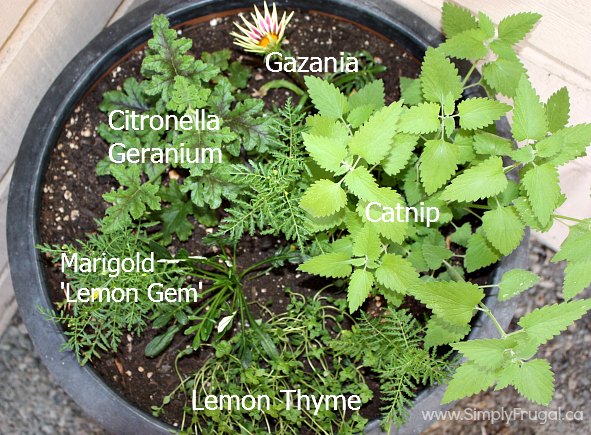
I’m excited to see how this works as the summer goes on. I hope it fills out nicely and that pretty flowers appear!
Have you ever done something like this? Did it help ward off the mosquitoes?
May 6 | Gardening
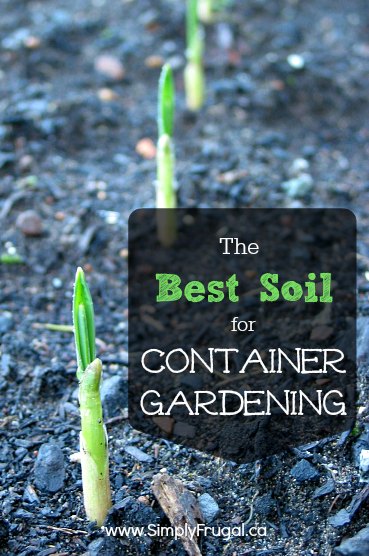
While you may be tempted to use plain old garden soil for filling your containers, garden soil is actually not ideal (on its own) for container gardening. It’s not ideal because having proper drainage for your container vegetables is necessary to the success of your plants. See, garden soil is much more dense than soil made specifically for containers. so, if you use only garden soil, water can pool around the roots of your plants, which causes them to drown because they’re lacking oxygen. So having a lighter mix of peat moss, compost and vermiculite will allow water to drain properly, giving the roots proper oxygen.
Along with proper drainage, the main functions of a potting mix are:
- To hold moisture and nutrients around your plant roots.
- To allow enough oxygen for roots to be able to breath and not rot.
- To provide proper support for your plants, protecting them from the elements. You don’t want them to blow over from the wind!
If you want an easy way to give your plants the highest chance at success, you can simply head to your local garden shop and buy a bag or two of potting soil. But if you’re looking for something that you can customize yourself, here’s a basic potting soil recipe:
Basic Potting Soil
1 part peat moss
1 part compost
1 part vermiculite
Simply mix all the ingredients together in a large bucket, wheelbarrow or tarp. Just so you don’t inhale too much dirt and dust, you should wear a mask during the mixing process.
You also might want to add some fertilizer based on the type of plants you want to grow in the pots, which is available at your local garden store. Speak to one of the helpful employees and they’ll be sure to recommend something that will suit your needs.
Note: if you’re growing potatoes in a container, regular garden soil should do the trick!











